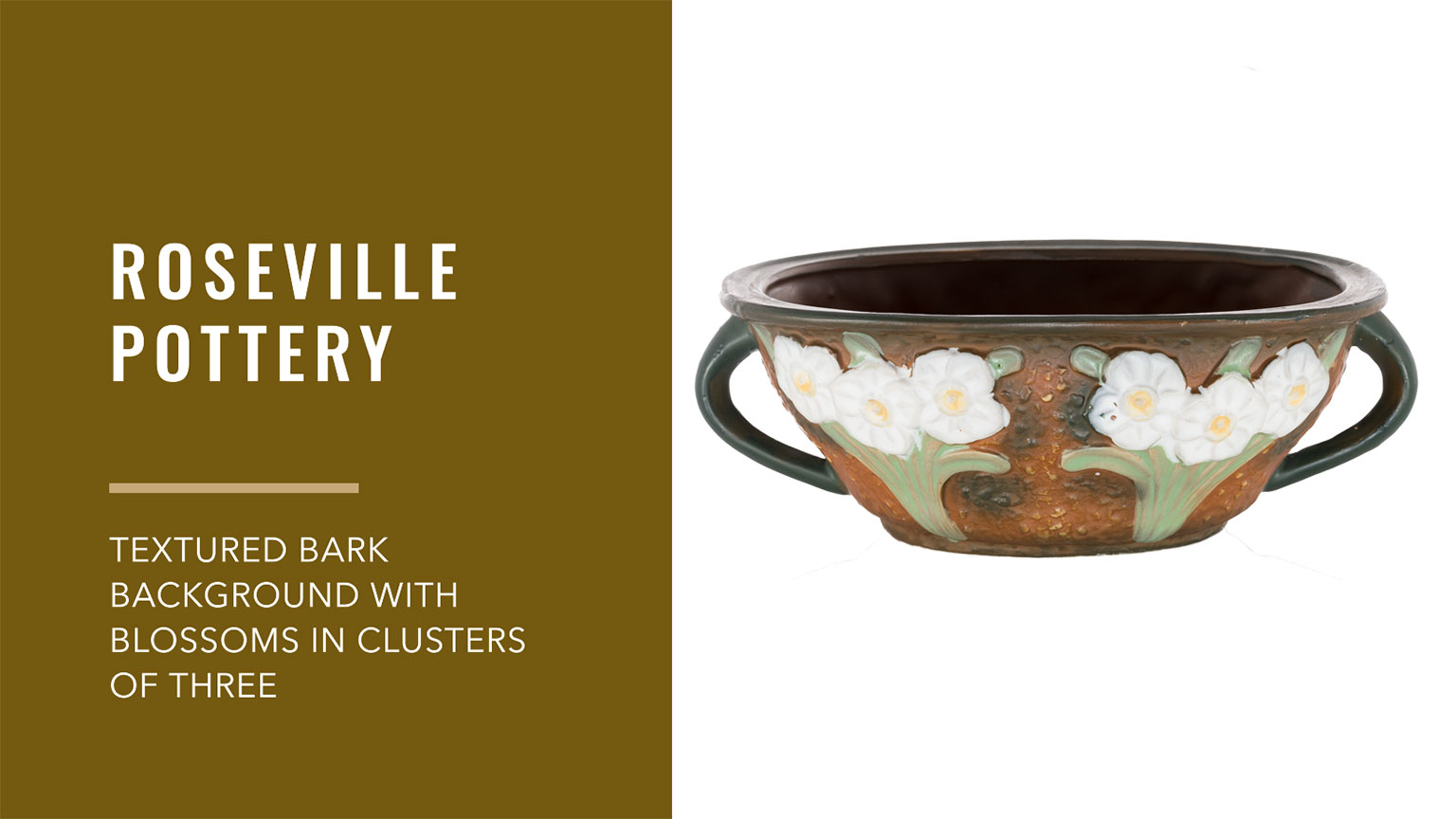A significant presence in American pottery, Roseville Pottery thrived from the late 19th century to the mid-20th century. Originating in Roseville, Ohio, the company, founded in 1890 as the Roseville Pottery Company, earned acclaim for its excellence in crafting high-quality art pottery featuring innovative designs and distinctive glazes.
Roseville Pottery went through several phases in terms of its artistic styles and designs. Some of the notable periods include:
- Rozane Ware (1898-1904): Roseville gained early success with Rozane Ware, featuring intricate hand-painted designs on a matte background. This period marked the company’s emergence as a significant player in the American art pottery scene.
- Arts and Crafts Movement (1900s-1920s): During the Arts and Crafts movement, Roseville embraced organic forms and earthy tones. Pieces from this era often featured floral and nature-inspired motifs.
- Futura and Art Deco (1920s-1930s): The 1920s saw Roseville adapting to the modern tastes of the time, with Futura being a line that embraced geometric shapes and bold, vibrant colors. The Art Deco influence is evident in many of their designs during this period.
- Utility Ware (1930s): In response to the economic challenges of the Great Depression, Roseville introduced more affordable and utilitarian lines, catering to a wider audience.
- Zephyr Lily and Pine Cone (1940s): The Zephyr Lily and Pine Cone lines are among the most well-known and sought-after Roseville designs from the late 1930s to the early 1940s. These pieces often feature stylized floral patterns and distinctive shapes.
Did You Know?
- Roseville employed skilled artists and designers, contributing to the distinctive and artistic quality of their pottery. Notable designers include Frank Ferrell, Frederick Rhead, and George Krause, among others.
- Roseville pieces typically bear a stamped or impressed signature on the bottom, indicating the company’s name. The presence of the Roseville mark is essential for authenticating and identifying genuine pieces.
- Many Roseville designs are inspired by nature, featuring motifs such as flowers, leaves, and vines.
- During the Great Depression, Roseville faced economic challenges like many other businesses. In response, they introduced more affordable lines known as Utility Ware to cater to a wider market.
- Serious collectors often refer to books and catalogs dedicated to Roseville Pottery, where various patterns and designs are documented. These resources are invaluable for those seeking to identify and understand specific pieces.
A brief overview of pricing – intended to complement, not substitute for thorough research in the present market:
- Common Designs: Common or mass-produced lines range from $50 to a few hundred dollars, depending on factors like size and condition. Examples of such designs would be: Roseville Juvenile line and the Wincraft line.
- Mid-Range Designs: Pieces from moderately popular lines or those with more intricate designs can range from a few hundred to several hundred dollars. A good example in this range would be the Roseville Ferella line. Another example would be the Roseville Baneda line, although some of the pieces in this line could exceed a few thousands dollars.
- Highly Sought-After Designs: Rare or highly sought-after designs, such as the Zephyr Lily or Pine Cone or Blackberry lines, can command higher prices. In some cases, individual pieces may be priced in the thousands of dollars, especially if they are in excellent condition. The best example in this range would be Roseville Della Robbia line – probably the most valuable Roseville pattern today.
Roseville Pottery faced challenges and closed its doors in the mid-1950s. However, its legacy lives on through the appreciation and continued interest in its beautifully crafted and artistically significant pieces. Today, Roseville Pottery is highly collectible, and enthusiasts value its contribution to the American art pottery tradition.
Ready to sell your Roseville Pottery? World Class Antiques welcomes you – Sell with no listing fees, keep everything you make, plus a low monthly cost. Join now!



